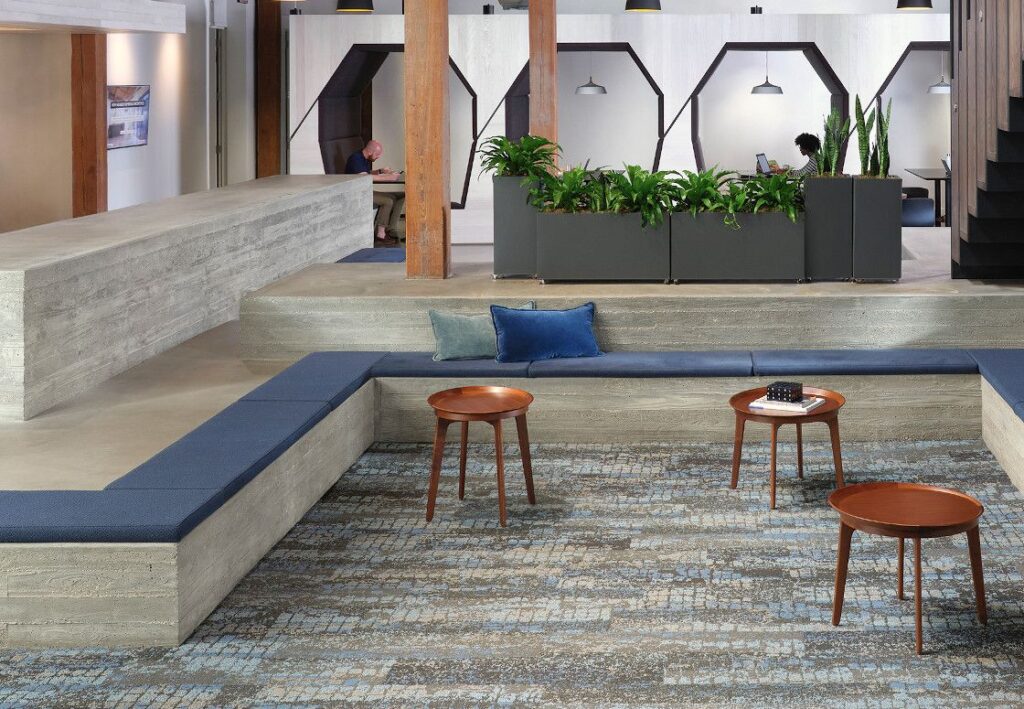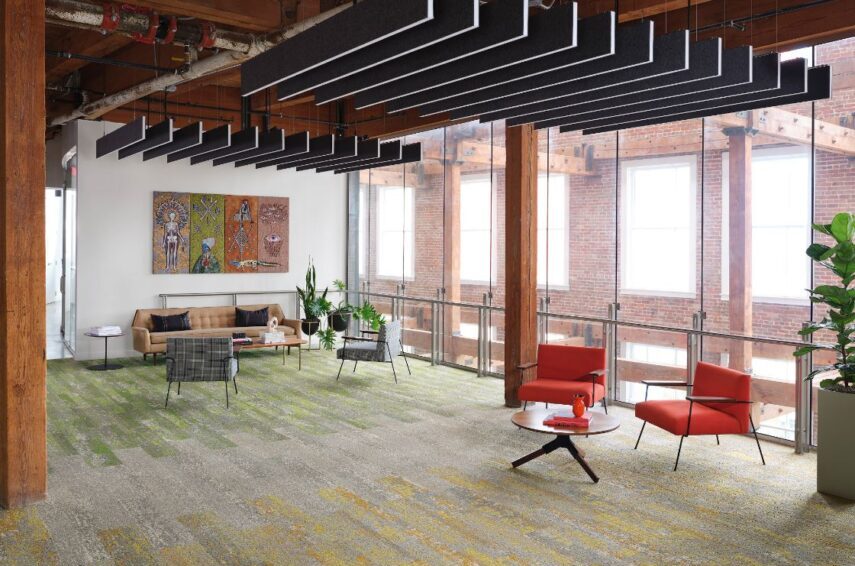
Connecting with nature is an innate human need. The most successful, most intriguing and most in-demand built spaces have invited nature inside to be a part of the design and to interact with the people that use the space. Incorporating natural elements into a design is called biophilic design and eventually, this will be a baseline standard in the same way that fire alarms and sprinkler systems are requirements now. By understanding how to incorporate biophilic design, you can set your property apart from the pack and do some good for both people and the planet at the same time.
Not only is a well-executed biophilic design alluring, but it also has both psychological and physical benefits for users of the space. Research has shown that patients in hospitals heal faster when they have a view of nature as opposed to a brick wall or parking lot. The sound of moving water has been shown to lower heart rates and general stress levels. When plants and natural materials are incorporated into a design productivity levels increase and absenteeism decreases.
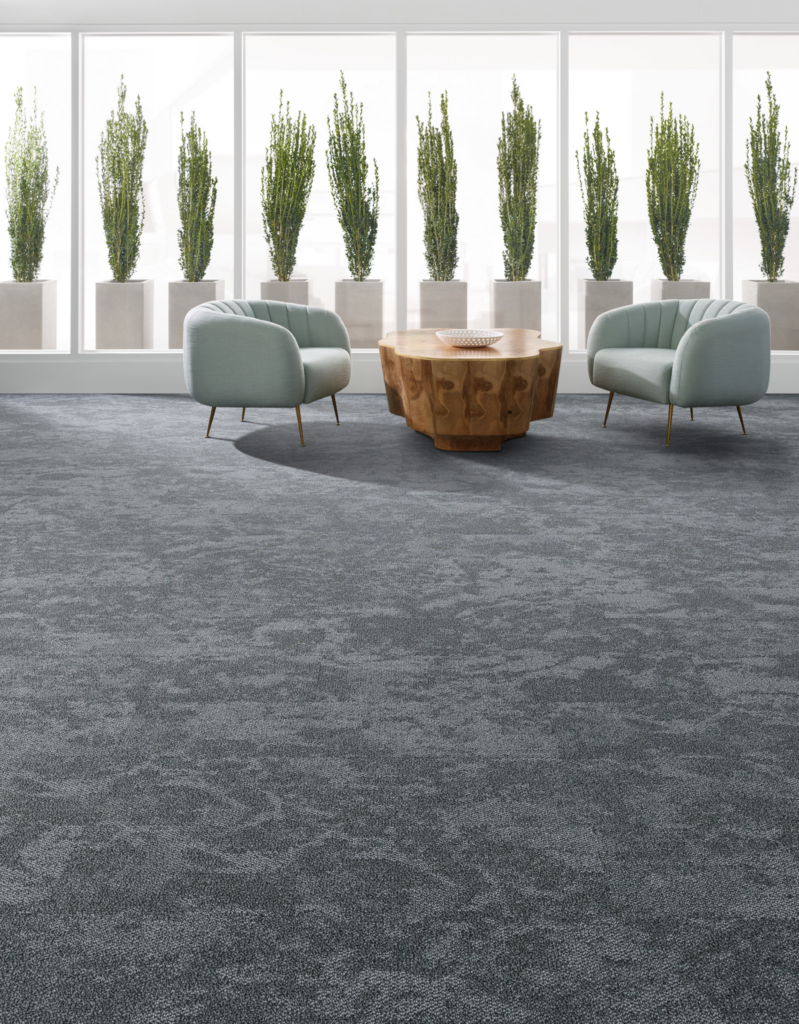
Architectural planters provide direct access to plants and delineate seating areas simultaneously 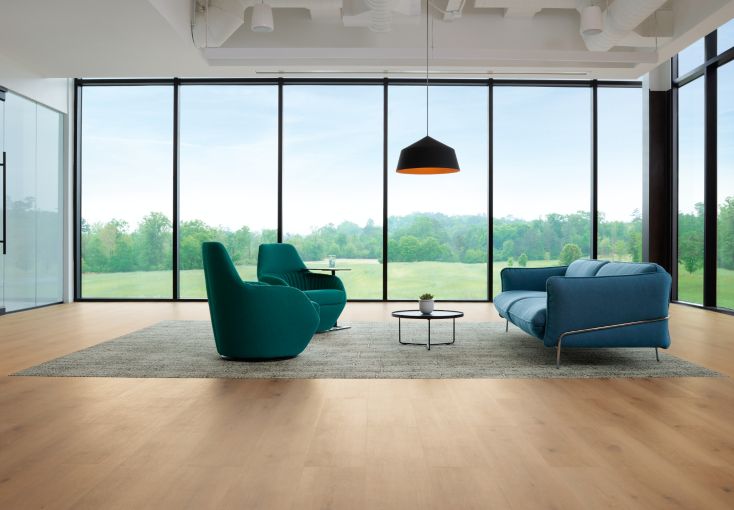
Floor to ceiling glazing provides panoramic views of nature
What this means for multifamily properties is increased engagement of and between residents, a feeling that they are a part of a unique property that contributes to the community at large. In return you see increased occupancy, higher rent rates, reduced vacancy rates and overall increased returns.
So what are some ways you can incorporate biophilic design into your next project? There are endless possibilities but one of the easiest and most economical ways is to implement natural colors and organic shapes and geometries in the materials that you already plan to use such as fabrics, carpets, hard surfaces, wallcovering, lighting, etc.
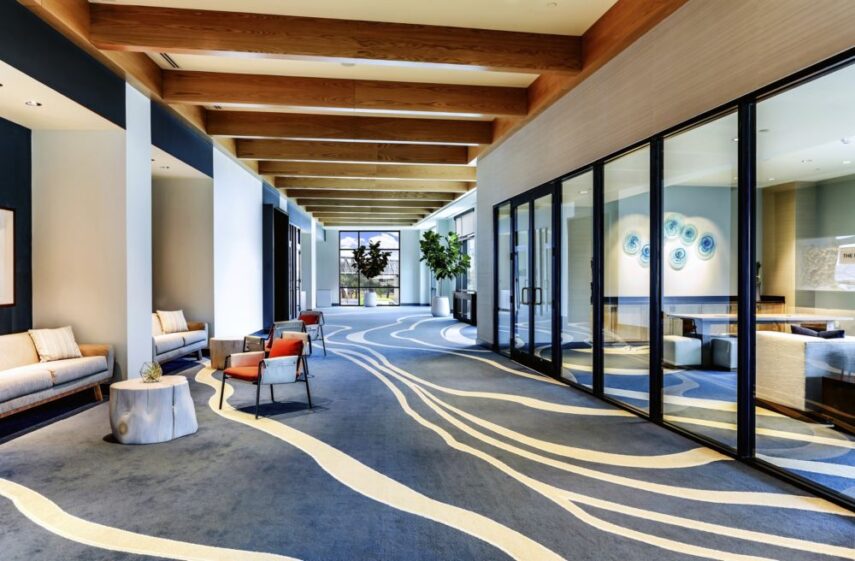
A new collection of carpet tiles from ShawContract achieves these goals beautifully. Living Systems mirrors nature with its regenerative and organic textures. The patterns scale up or down to create an adaptive flooring solution for multiple adjacent spaces, creating an engaging and revitalizing flooring solution.
Natural materials such as wood are a popular element of biophilic design. In multifamily, it can be hard to use real wood due to maintenance and durability issues. However, LVT, or luxury vinyl tile, achieves the look of wood with the durability and cleanability of a resilient. With a myriad of wood-look resilient flooring options such as Inlet, Soundscape, and Repose, a wood-look floor can be incorporated that meets your budget, maintenance, and acoustic requirements in both amenity and private spaces.
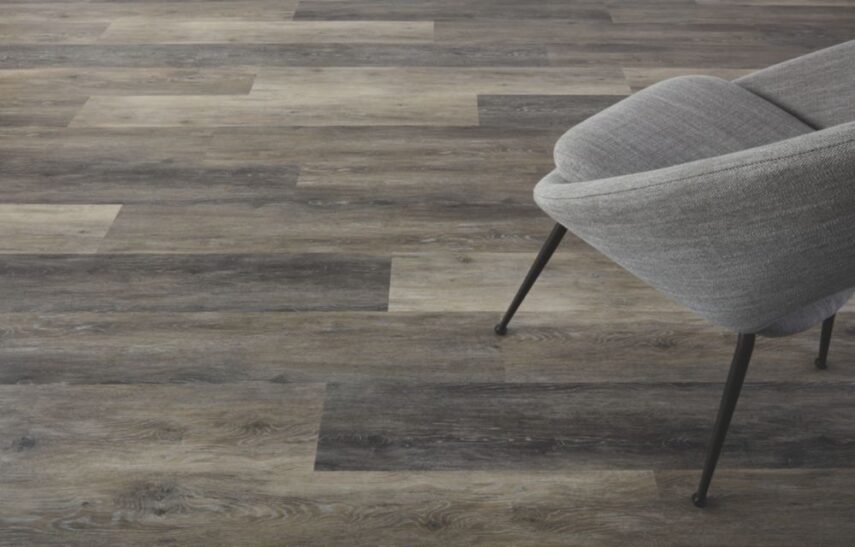
Biophilic design in multifamily housing is crucial to the health of the community. As populations in urban centers increase, property owners, developers, and their design and architecture teams need to carefully consider how to design with and in partnership with nature to ensure a thriving future.
About the Author:
Leslie Jones is an account manager for ShawContract in the Washington, DC area. She received an undergraduate degree in interior design and started her career doing commercial interior design in Washington, DC before transitioning to a career with Shaw. She has always been passionate about sustainability, earning her LEED AP credential in 2007. She is proud to work for a flooring company that incorporates closed-loop recycling of its materials, manufacturing Cradle to Cradle certified products.
